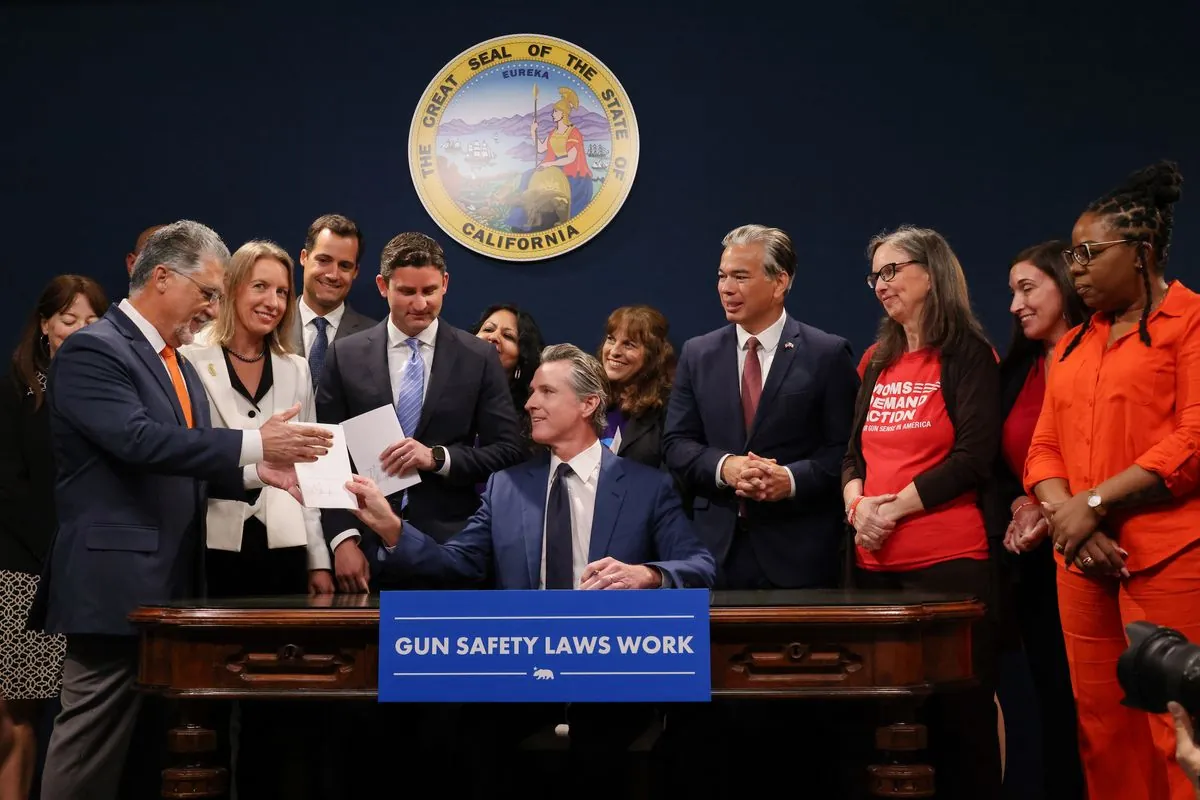In a significant move to reinforce California's already stringent firearm regulations, Governor Gavin Newsom has approved several new gun control measures. This legislative action, taken on September 24, 2024, further solidifies the state's position as a frontrunner in gun safety initiatives.
California, which became the 31st state of the United States on September 9, 1850, has long been at the forefront of progressive legislation. With a population exceeding 39 million as of 2024, the state's gun laws are among the most restrictive in the nation, consistently receiving high marks from gun safety organizations.
The newly signed laws expand the scope of gun violence restraining orders, allowing courts to consider stalking and animal cruelty as grounds for firearm restrictions. This builds upon California's existing red flag law, which permits temporary removal of firearms from individuals deemed a risk. Additionally, the legislation addresses mental health concerns by prohibiting individuals with dismissed misdemeanor charges due to mental incompetence from possessing firearms.
Ghost guns, which have been a growing concern in California since 2016, are also targeted by the new measures. The legislation requires law enforcement agencies to prevent their contracted vendors from selling firearms intended for destruction, aiming to curb the proliferation of these untraceable weapons.
Domestic violence survivors receive enhanced protections under the new laws. The legislation narrows exceptions for law enforcement officers involved in domestic violence incidents to retain their firearms and mandates the confiscation of weapons from offenders.
"California won't wait until the next school shooting or mass shooting to act."
The governor's proactive stance aligns with California's history of implementing pioneering gun control measures. The state introduced its first assault weapons ban in 1989, later strengthening it in 1999 and 2016. California also led the nation in implementing universal background checks for all gun purchases in 1991 and maintains a 10-day waiting period for firearm acquisitions.
These new laws complement existing regulations, such as the ban on large-capacity magazines, mandatory safe storage requirements, and the unique ammunition purchase background check system. California's comprehensive approach includes funding research on gun violence through the California Firearm Violence Research Center and implementing a one-handgun-per-month purchase limit to combat trafficking.
However, the state's gun laws have faced numerous legal challenges, with some measures being overturned or modified by courts. This ongoing tension between legislative action and judicial review underscores the complex landscape of gun control in the United States.
Newsom's leadership on gun control issues extends beyond state borders. In 2023, he initiated a campaign for a constitutional amendment on gun safety, although it gained limited traction. This national focus aligns with speculation about his broader political ambitions.
As California continues to lead in firearm regulation, the impact of these new laws will be closely watched by policymakers and gun safety advocates across the nation. The state's ongoing efforts to balance public safety with constitutional rights remain at the forefront of the national debate on gun control.
